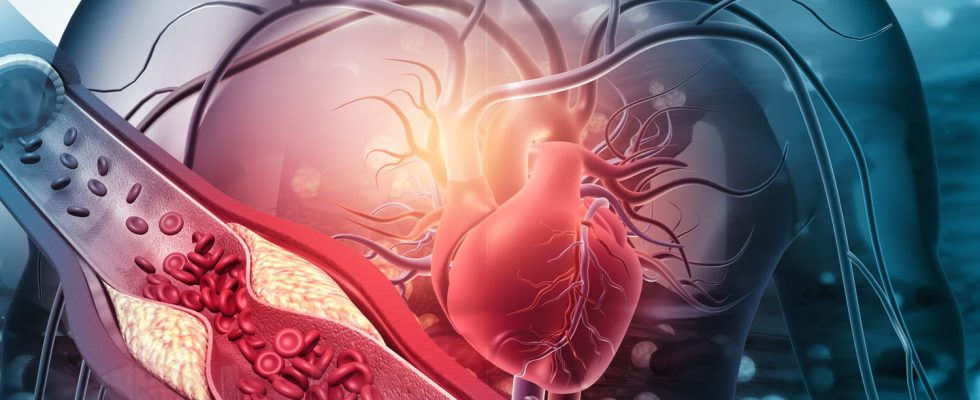Obstructive cardiomyopathy (OCM) refers to abnormal thickening of the wall of the heart muscle. What are the signs ? The causes ? When to operate? Is that bad ? Definition and diagram to understand.
There obstructive cardiomyopathy Or CMO is characterized by an abnormally thick heart muscle wall. It is most common genetic heart disease. CMO is called “obstructive” because the hypertrophy interferes with the proper ejection of blood. What is it concretely? What are the signs of a CMO? What Causes Obstructive Cardiomyopathy? Is that bad ? How to treat it? With an operation?
What is the definition of a CMO?
The term “cardiomyopathy” literally means a “heart muscle disease“. The term includes several different diseases whose common point is to affect and weaken the myocardium, the muscular engine of the heart. The dysfunction of this muscle hampers the function of pumping blood from the heart to the rest of the body. obstructive cardiomyopathy (OCM) is a form of hypertrophic cardiomyopathy. Hypertrophic cardiomyopathies are characterized by abnormal thickening of the wall of the heart musclemost often from left ventricle. CMO is said to be “obstructive” because the hypertrophy hinders the proper ejection of blood.
What are the signs of a CMO?
The symptoms vary according to the types of cardiomyopathy, and it often even happens that it is asymptomatic at first (absence of clinical signs). Obstructive cardiomyopathy can be discovered after a consultation for difficulty in breathing during physical exertion, chest pain, of the palpitations or discomfort (syncope). If in doubt, do not hesitate to consult a doctor.
What can cause obstructive cardiomyopathy?
Hypertrophic cardiomyopathy, including its obstructive form, is a disease of genetic origin. It is caused by mutation of a gene that codes for heart muscle. It is transmitted in an autosomal dominant way: the child can be affected if one of the two parents carries the anomaly. As Professor Bonnefoy, head of the cardiological emergency and intensive care cardiology department at the Hospices Civils de Lyon, points out, “Other causes of heart wall enlargement exist and should be investigated before concluding hypertrophic cardiomyopathy”.
Obstructive cardiomyopathy can be discovered fortuitously during examinations such as electrocardiogram or a pulmonary radiography. It may exist an abnormal sound on auscultation of the heart (murmur). Several types of medical tests can detect this pathology, such as coronary angiography (coronarography) or simple blood tests. Echocardiography, on the other hand, specifies the type of cardiomyopathy.
What treatment to treat obstructive cardiomyopathy?
The treatment of obstructive cardiomyopathy is based on symptomatic care to improve the patient’s quality of life. Drug treatments, commonly used in cardiology in chronic heart failure, are most often prescribed:
- Diuretics
- Calcium channel blockers
- Beta-blockers
- ACE inhibitors…
In some cases, heart pacing (defibrillator, pacemaker) or surgery (heart transplant) are considered.
When to consider an operation in case of CMO? A heart transplant?
Surgical intervention is proposed when drug treatment is not sufficient to relieve the symptoms of cardiomyopathy, and even more so when there is an obstruction. The operation involves removing part of the heart muscle (myomectomy). Heart transplantation is only considered as a last resort in severe and irreversible heart failure.
The course of hypertrophic cardiomyopathy and its obstructive form varies between individuals. The disease may remain stable for several years, or cause severe complications such as heart failure and atrial or ventricular arrhythmias.
Thank you to Professor Eric Bonnefoy, head of the cardiological emergency and intensive care cardiology department at the Hospices Civils de Lyon.
